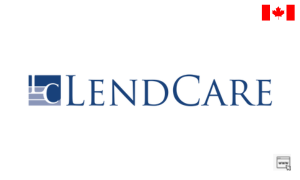Payday Loans in Canada
Payday loans, also known as cash advance loans, are marketed as short-term financial relief for individuals in a bind. Typically, these loans are for small amounts, up to $500, and are meant to be repaid with the borrower’s next paycheck. The appeal lies in their simplicity: a quick application process, requiring only an ID, proof of income, and a bank account. Once approved, funds are deposited within 24 hours.
Specifications and Costs
While the process seems straightforward, the real cost of a payday loan can be staggering. Lenders often charge $20 for every $100 borrowed over a two-week period, translating to an annual percentage rate (APR) of around 500%. This exorbitant rate can quickly lead to a cycle of debt if not managed carefully.
A Real-Life Example: Paula’s Story
Consider the case of Paula, a full-time server at a restaurant. After missing shifts due to illness and facing increased living costs, she found herself short on rent. With eviction looming, Paula turned to a payday loan to cover the deficit. Initially, the $500 loan seemed like a lifesaver, but it quickly became a burden.
Despite her intentions, Paula struggled to repay the loan in full by the due date. With only $150 available, she faced a $35 overdraft fee when the lender attempted to withdraw the full amount. To extend the loan, she paid $100 in interest, adding to her financial woes. Over five months, Paula paid nearly $1,000 in interest and fees, without reducing the principal amount.
The Predatory Nature of Payday Loans
Payday loans are often criticized for their predatory practices. Two key issues stand out: high interest rates and lack of underwriting. Unlike traditional loans, payday lenders typically do not assess a borrower’s ability to repay. This lack of due diligence can trap borrowers in a cycle of debt, as seen in Paula’s case.
In 2017, the Consumer Financial Protection Bureau (CFPB) attempted to address this issue by mandating underwriting for payday loans. However, this rule was revoked in 2020, leaving many borrowers vulnerable to exploitation.
Alternatives to Payday Loans
For those in financial distress, payday loans should be a last resort. There are several alternatives that can provide relief without the high costs:
- Personal Loans: Credit unions often offer personal loans with lower interest rates and better terms.
- Credit Cards: If available, using a credit card may be a more manageable option.
- Borrowing from Friends or Family: Although it can be uncomfortable, borrowing from trusted individuals can prevent high-interest debt.
- Selling Possessions: Temporarily parting with valuables can provide immediate cash without long-term consequences.
- Extra Work: Taking on additional work or side gigs can help bridge financial gaps.
The Consequences of Defaulting
Defaulting on a payday loan can have severe consequences. Lenders may refer debts to collection agencies or pursue legal action, leading to wage garnishment or liens on property. For those already struggling, these measures can compound financial stress.
Before considering default, borrowers should attempt to negotiate with lenders. Many are willing to settle for a reduced amount, especially if bankruptcy is mentioned as a possibility. This approach can sometimes provide a way out of the debt trap.
The Final Verdict
Payday loans are rarely a good idea. The high costs and potential for long-term debt outweigh the short-term benefits. For those in need of quick cash, exploring other options is crucial. Financial stability requires thoughtful planning and avoiding traps that promise quick fixes but deliver lasting problems.



